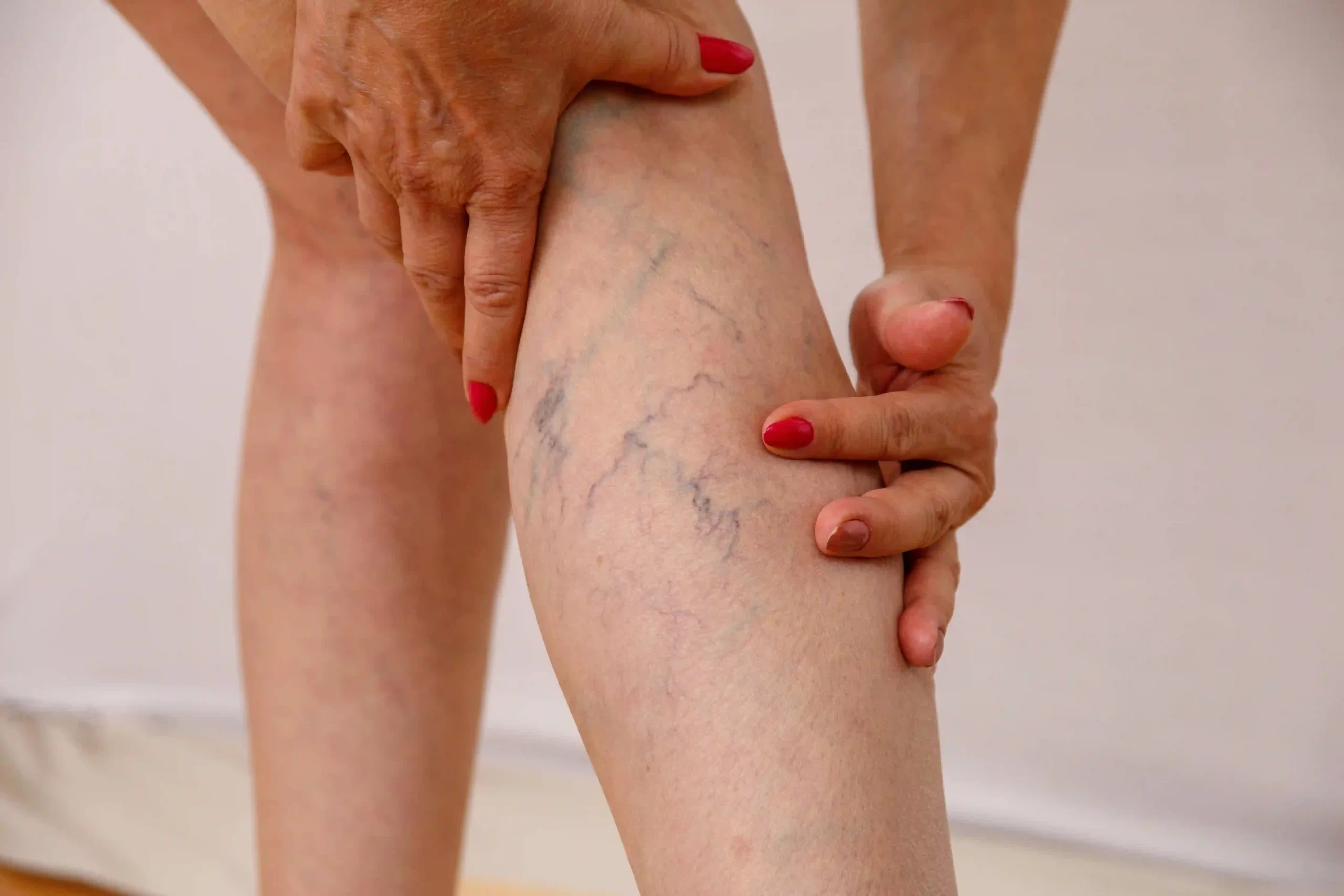How to Prevent Varicose Veins and Maintain Healthy Legs
Quick Summary
1.Boosts Blood Circulation – Daily walking, stretching, and low-impact exercises improve vein health and prevent blood pooling.
2.Supports Weight Management – Maintaining a healthy weight reduces pressure on leg veins and improves circulation.
3.Enhances Vein Strength—Nutrients like Vitamin C, Vitamin E, and flavonoids keep vein walls strong and flexible.
4.Reduces Swelling Risks – Leg elevation, compression stockings, and hydration help prevent swelling and discomfort.
5. Protects Leg Health During Long Periods of Inactivity – Taking movement breaks, wearing supportive clothing, and staying hydrated minimize varicose vein risk.
Varicose veins aren’t just a cosmetic concern, they can also cause discomfort, swelling, and even long-term vein health issues if left untreated. In this blog, we’ll walk you through what varicose veins are, why they happen, and the most effective prevention tips to keep your legs healthy and strong. We’ll also cover lifestyle changes, diet recommendations, and exercise habits that support good vein health. And if you’re already dealing with early signs of varicose veins, we’ll share professional treatment options available right here in Beverly Hills. 
Understanding Varicose Veins
Varicose veins occur when the valves in your veins weaken, making it harder for blood to flow back toward your heart. This causes blood to pool in the veins, leading to visible bulging, twisting, or discoloration, often in the legs. While they can happen to anyone, certain factors such as age, genetics, pregnancy, standing for long periods, and being overweight can increase the risk.
Prevention Tips for Varicose Veins and Healthy Legs
-
1. Stay Active to Boost Circulation
Maintaining healthy blood circulation is key to preventing varicose veins. Regular physical activity strengthens your leg muscles, which helps your veins pump blood more efficiently.Walking: Make it a goal to be active for 30 minutes, five days weekly.
Low-impact exercises: Swimming, cycling, and yoga are gentle on your joints while keeping circulation strong.
Stretch breaks: If you work at a desk, take short walks or do calf raises every hour to improve circulation.If you’re already experiencing mild symptoms or want to learn about advanced treatment options, refer to our varicose vein treatment in Beverly Hills page for expert solutions.
-
2.Maintain a Healthy Weight
Carrying extra weight puts more pressure on your veins, especially those in your legs. Maintaining a healthy body weight reduces stress on your circulatory system and helps blood flow more efficiently.
-
Focus on a balanced diet rich in vegetables, fruits, lean proteins, and whole grains.
-
Limit processed foods, sugary snacks, and excess salt, which can lead to water retention and swelling.
-
-
3. Wear Compression Stockings if Needed
Wearing compression stockings supports better circulation and helps reduce leg swelling. They work by gently squeezing your legs, helping your veins and leg muscles move blood more efficiently. These are particularly helpful if your job requires long hours of standing or sitting, or if you travel often by plane. -
4. Avoid Long Periods of Sitting or Standing
Prolonged sitting or standing can cause blood to pool in your legs, increasing your risk of varicose veins.
-
If you sit for long periods, try to get up and walk every 30–60 minutes.
-
If you stand for extended hours, shift your weight from one leg to the other and take short breaks to move around.
-
Consider a sit-stand desk to alternate between sitting and standing throughout the day.
-
-
5. Elevate Your Legs Regularly
Elevating your legs above the level of your heart for 15–20 minutes a few times a day can help blood flow back toward your heart and reduce swelling. This is a simple habit you can do while watching TV, reading, or relaxing in bed. -
6.Choose Comfortable Clothing and Footwear
Tight clothing around your waist, legs, or groin can restrict blood flow. Opt for looser, breathable fabrics. Low-heeled shoes are better for calf muscle tone than high heels, which can hinder blood flow in the legs.
-
7.Eat for Vein Health
Your diet plays a huge role in vein health. Certain nutrients can help strengthen vein walls and improve circulation:
-
Vitamin C (citrus fruits, berries, bell peppers) helps produce collagen for strong veins.
-
Vitamin E (nuts, seeds, spinach) improves blood flow.
-
Flavonoids (dark chocolate, grapes, apples) support healthy circulation.
Fiber-rich foods (whole grains, beans) help prevent constipation, which can put extra pressure on veins.
-
-
8.Hydrate and Limit Alcohol
Staying hydrated supports healthy blood volume and circulation. Ensure you consume at least 8 glasses of water every day. Limiting alcohol helps prevent dehydration and swelling, both of which can negatively affect your veins.
-
9.Protect Your Legs During Travel
Extended flights or long road trips can raise the risk of blood accumulating in your legs. To prevent this:
-
Stand up and walk around every hour or two.
-
Wear compression socks during long travel times.
-
Do simple in-seat exercises like ankle rolls and calf raises.
-
-
10.Make Prevention Part of Your Routine
The key to vein health is consistency. Incorporate small changes into your daily life, whether it’s taking the stairs, adding more veggies to your meals, or doing a quick stretch break at work. Over time, these small habits add to healthier legs and reduced varicose vein risk.
Conclusion
Varicose vein prevention is all about keeping your legs active, maintaining a healthy weight, eating well, and making small daily changes that protect your veins. By starting these habits now, you can reduce your risk and enjoy better leg health for years to come.
If you’re already experiencing symptoms or want a professional evaluation, we’re here to help. Book your consultation today and move closer to healthier, more comfortable legs.
Frequently Asked Question

